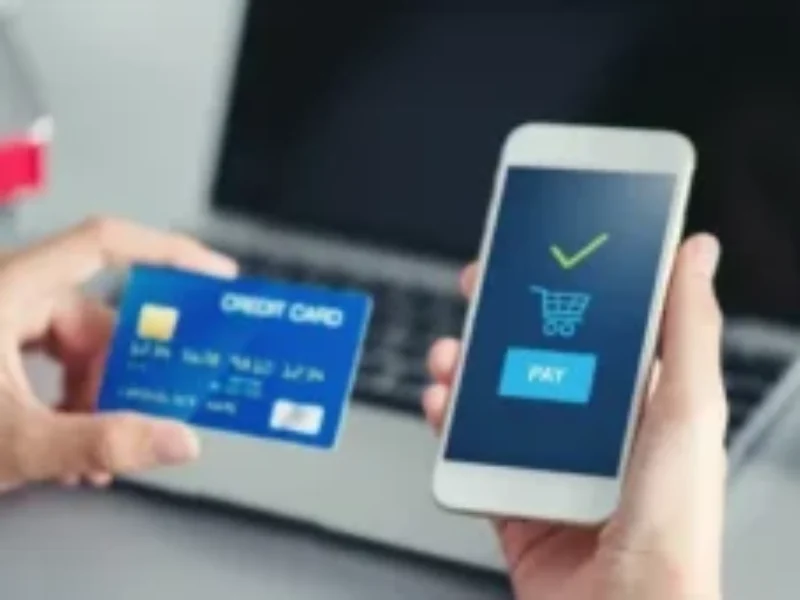Innovations in Online Payment Systems
Introduction
The digital revolution has transformed the way we conduct transactions, making online payment systems an integral part of our daily lives. As technology continues to advance, innovations in online payment systems are shaping the future of financial transactions. This article explores key innovations in online payment systems that are revolutionizing the way we pay, purchase, and manage our finances.
Contactless Payments
Contactless payments have become a ubiquitous feature in the modern payment landscape. Enabled by Near Field Communication (NFC) technology, contactless payments allow users to make transactions by simply tapping their cards or mobile devices on compatible terminals. This innovation not only enhances convenience but also contributes to a faster and more streamlined payment process.
Mobile Wallets
Mobile wallets have emerged as a popular alternative to traditional payment methods. These digital wallets, such as Apple Pay, Google Pay, and Samsung Pay, allow users to store payment information securely on their smartphones. By leveraging NFC technology, users can make seamless and secure transactions using their mobile devices, eliminating the need for physical cards.
Biometric Authentication
Enhancing security in online payments, biometric authentication methods are gaining prominence. Fingerprint recognition, facial recognition, and iris scanning provide an additional layer of security, reducing the reliance on traditional passwords and PINs. Biometric authentication adds convenience for users while offering robust protection against unauthorized access.
Blockchain and Cryptocurrencies
Blockchain technology and cryptocurrencies like Bitcoin have introduced decentralized and secure payment alternatives. Blockchain facilitates transparent and tamper-proof transaction records, enhancing trust in financial transactions. Cryptocurrencies offer borderless transactions with lower fees and increased privacy, challenging traditional banking systems and fostering financial inclusivity.
In-App Payments
The integration of in-app payments allows users to make purchases directly within mobile applications. This innovation is particularly prevalent in e-commerce, food delivery, and ride-sharing apps. In-app payments streamline the checkout process, providing a seamless and efficient experience for users without redirecting them to external payment gateways.
Tokenization for Security
Tokenization enhances the security of online payments by replacing sensitive information, such as card numbers, with unique tokens. These tokens are useless to potential hackers, as they cannot be used for transactions outside the specific context in which they are generated. Tokenization reduces the risk of data breaches and unauthorized access to sensitive financial information.
Voice-Activated Payments
Voice-activated payments leverage voice recognition technology to facilitate transactions. Virtual assistants like Amazon’s Alexa and Apple’s Siri enable users to make purchases, pay bills, or transfer funds using voice commands. This hands-free approach adds a new dimension of convenience to online payments, especially in smart home environments.
Dynamic CVVs
Traditional static Card Verification Values (CVVs) are being replaced by dynamic CVVs in some online payment systems. Dynamic CVVs change periodically, enhancing security by making it more challenging for cybercriminals to use stolen card information. This innovation reduces the risk of unauthorized transactions, providing an extra layer of protection for users.
Internet of Things (IoT) Payments
The Internet of Things (IoT) has extended its influence to the realm of online payments. Smart devices, from refrigerators to wearables, can facilitate transactions on behalf of users. For example, a smart fridge can reorder groceries and make payments autonomously. IoT payments contribute to a more interconnected and automated financial ecosystem.
Open Banking Platforms
Open banking initiatives promote collaboration and innovation in the financial industry. By allowing third-party developers access to financial data through Application Programming Interfaces (APIs), open banking platforms enable the creation of innovative payment solutions. This facilitates the development of personalized financial services and enhances user control over their financial data.
Subscription and Recurring Payments
Subscription and recurring payment models have gained popularity, especially in digital services and subscription-based businesses. This innovation allows users to set up automatic, recurring payments for services, subscriptions, or memberships. The convenience of automated payments reduces friction for users and ensures a steady revenue stream for businesses.
Augmented Reality (AR) Payments
Augmented Reality (AR) is making its mark on online payments by offering interactive and immersive experiences. AR can be used to scan physical items for instant purchases, try on virtual products before buying, or even visualize financial data in real-time. AR payments add a layer of engagement and personalization to the payment process.
Cross-Border Payment Solutions
Cross-border payment solutions address the challenges of international transactions, offering faster and more cost-effective alternatives to traditional banking methods. Fintech companies are leveraging blockchain and digital currencies to facilitate seamless cross-border payments, reducing currency conversion fees and processing times.
Behavioral Analytics for Fraud Detection
Behavioral analytics use machine learning algorithms to analyze user behavior and detect abnormal patterns that may indicate fraudulent activity. This innovation enhances the security of online payment systems by identifying irregularities and triggering additional verification steps when needed. Behavioral analytics provide a proactive approach to fraud prevention.
Real-Time Payments
Real-time payments enable instantaneous fund transfers between parties. Many countries are implementing or exploring real-time payment systems that operate 24/7, allowing users to send and receive funds instantly. Real-time payments cater to the growing demand for immediacy in financial transactions, particularly in the context of e-commerce and peer-to-peer payments.
Conclusion
Innovations in online payment systems are reshaping the way we engage with financial transactions. From contactless payments and mobile wallets to blockchain and voice-activated payments, the evolution of online payment methods is driven by a quest for enhanced security, efficiency, and user experience. As technology continues to advance, the future of online payments holds the promise of even more seamless, secure, and innovative financial transactions.
